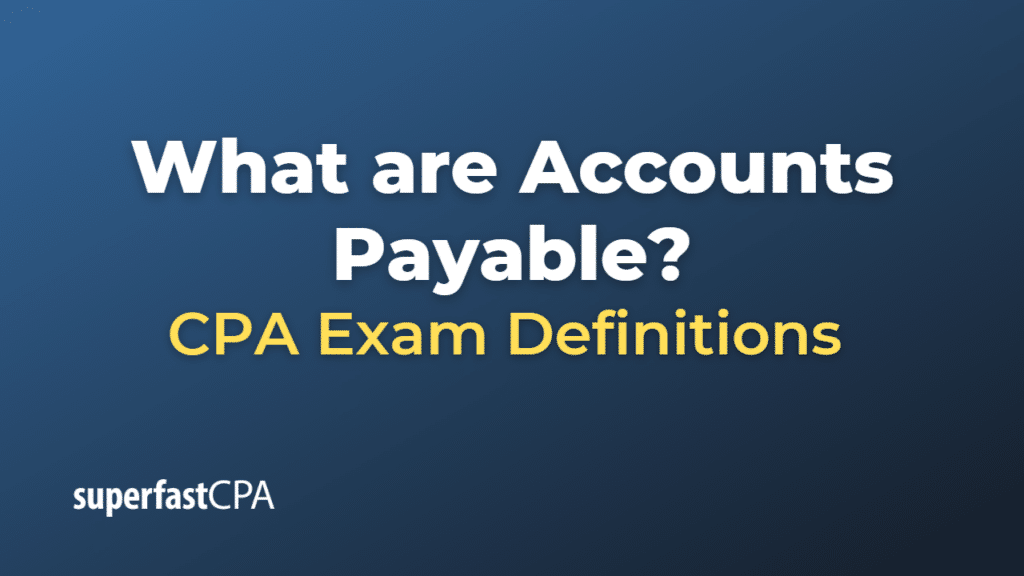Accounts Payable
Accounts payable (AP) is an accounting term that represents a company’s financial obligations to its suppliers or creditors for goods and services received on credit. These are short-term liabilities that typically must be paid within a specified period, usually 30 to 90 days, depending on the terms agreed upon with the supplier.
Accounts payable is a current liability account on the balance sheet, and it is part of a company’s working capital (current assets minus current liabilities). The balance in the accounts payable account indicates the total amount the company owes to its suppliers or creditors at a specific point in time.
When a company receives goods or services on credit, it records a journal entry that increases (credits) the accounts payable account and increases (debits) the relevant expense or asset account, depending on the nature of the purchase. When the company pays its suppliers or creditors, it records another journal entry that decreases (debits) the accounts payable account and decreases (credits) the cash account.
Proper management of accounts payable is essential for a business’s cash flow and maintaining good relationships with suppliers. Timely payment of accounts payable ensures that a company can maintain its creditworthiness and avoid late fees or penalties. On the other hand, a company should also avoid paying its accounts payable too early, as doing so may result in reduced cash flow and missed opportunities to invest or use that cash for other purposes.
In summary, accounts payable represents a company’s short-term financial obligations to its suppliers or creditors, and it plays a crucial role in managing a business’s cash flow and working capital.
Example of Accounts Payable
Let’s consider a fictional company, “Cozy Comfort Furniture,” which purchases $10,000 worth of raw materials from a supplier on credit with terms of 30 days. The accounting entries for this transaction would be as follows:
When Cozy Comfort Furniture receives the raw materials and the invoice from the supplier:
- Debit Inventory (Asset) account: +$10,000
- Credit Accounts Payable (Liability) account: +$10,000
This journal entry increases the Inventory account by $10,000, reflecting the addition of the raw materials, and increases the Accounts Payable account by $10,000, representing the obligation to pay the supplier within 30 days.
Now, let’s assume Cozy Comfort Furniture pays the supplier within the agreed-upon 30-day period. The accounting entries for this payment would be:
- Debit Accounts Payable (Liability) account: -$10,000
- Credit Cash (Asset) account: -$10,000
This journal entry decreases the Accounts Payable account by $10,000, reflecting the payment made to the supplier, and decreases the Cash account by $10,000, representing the cash outflow for the payment.
By properly recording and managing its accounts payable, Cozy Comfort Furniture can ensure accurate financial reporting, maintain good relationships with suppliers, and optimize its cash flow and working capital management.













